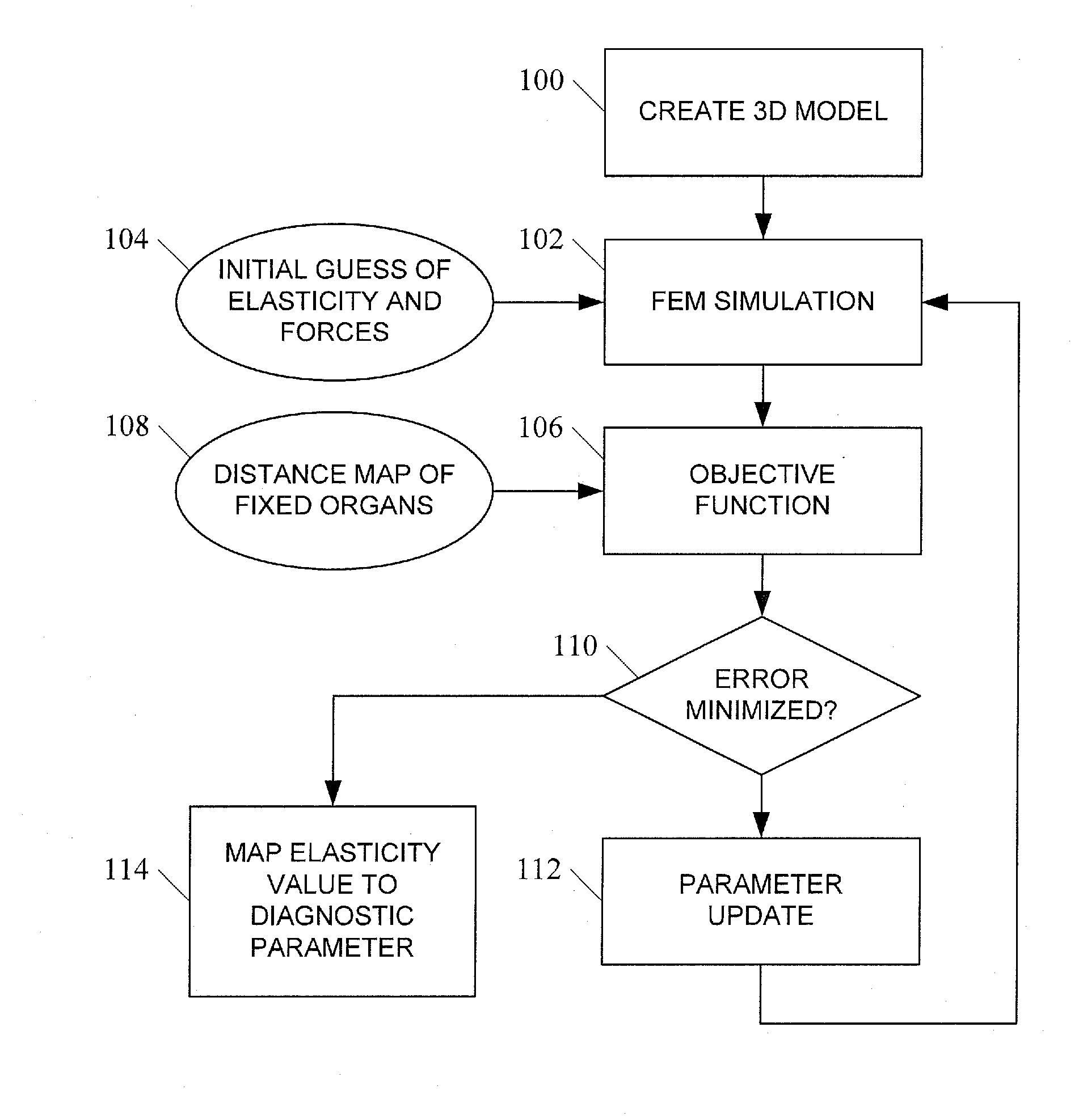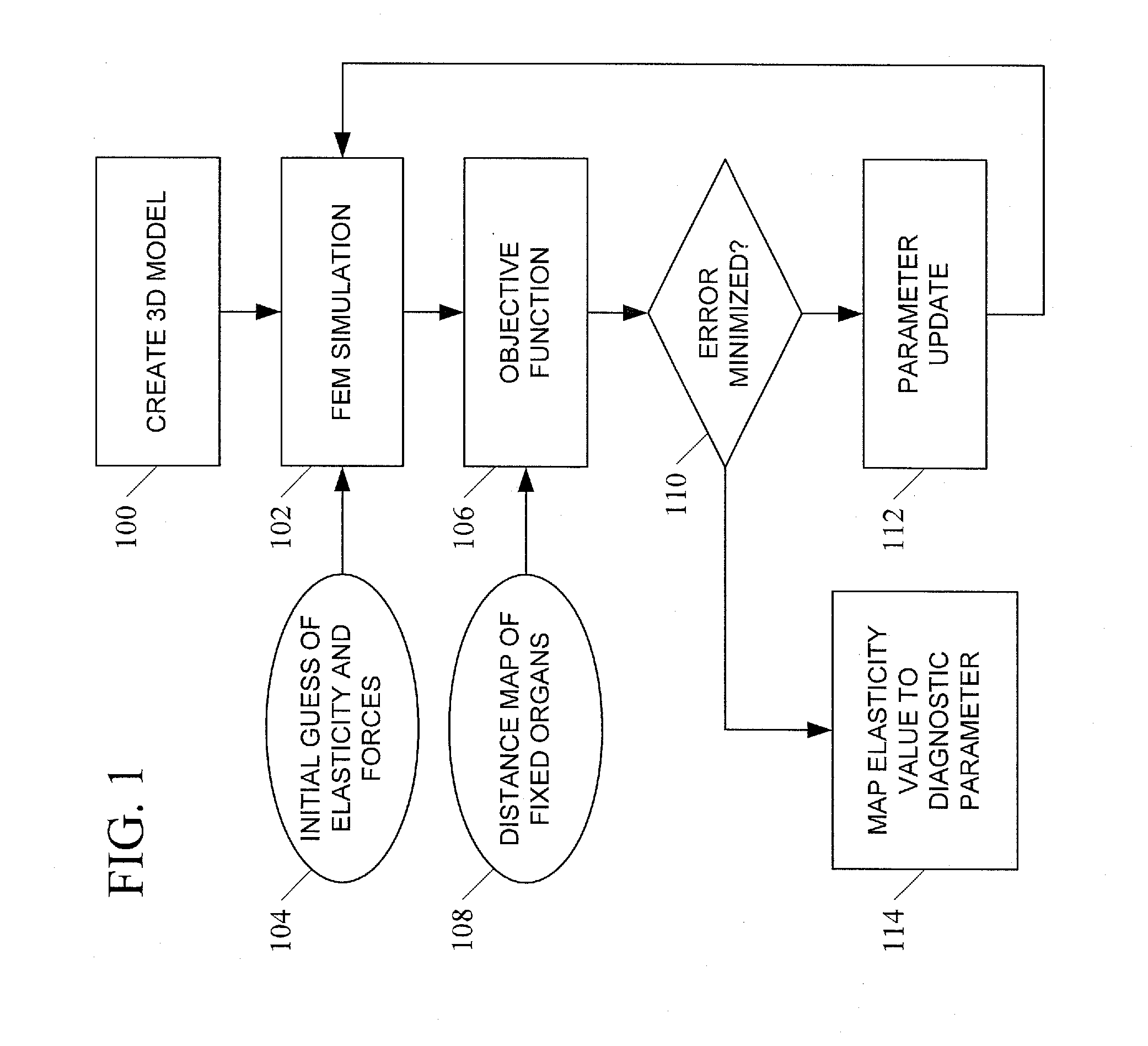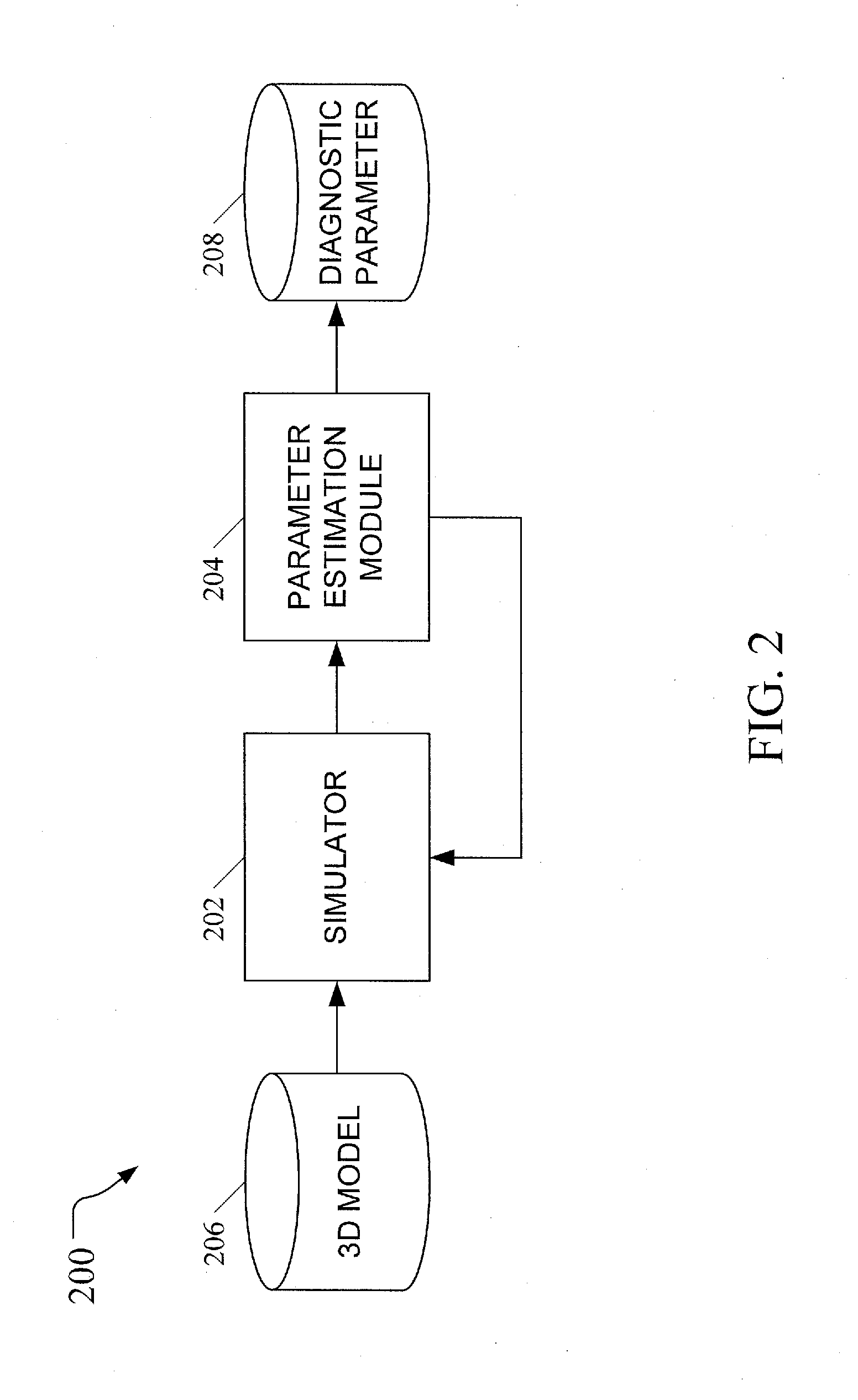Simulation-based estimation of elasticity parameters and use of same for non-invasive cancer detection and cancer staging
- Summary
- Abstract
- Description
- Claims
- Application Information
AI Technical Summary
Benefits of technology
Problems solved by technology
Method used
Image
Examples
Embodiment Construction
[0029]In accordance with the subject matter disclosed herein, systems, methods, and computer readable media for simulation-based estimation of elasticity parameters and use of same for non-invasive cancer detection and cancer staging are provided. Reference will now be made in detail to exemplary embodiments of the present invention, examples of which are illustrated in the accompanying drawings. Wherever possible, the same reference numbers will be used throughout the drawings to refer to the same or like parts.
I. INTRODUCTION
[0030]We propose an entirely passive analysis of a pair of images that only uses information about the boundaries of corresponding internal objects. We assume the images have already been segmented, that is, the organ boundaries have been found. Since we do not assume a good correspondence for pixels inside an object, the resolution of the resulting elastogram is limited to the object boundaries. Namely, we assume that the elasticity is fixed within each objec...
PUM
 Login to View More
Login to View More Abstract
Description
Claims
Application Information
 Login to View More
Login to View More - R&D
- Intellectual Property
- Life Sciences
- Materials
- Tech Scout
- Unparalleled Data Quality
- Higher Quality Content
- 60% Fewer Hallucinations
Browse by: Latest US Patents, China's latest patents, Technical Efficacy Thesaurus, Application Domain, Technology Topic, Popular Technical Reports.
© 2025 PatSnap. All rights reserved.Legal|Privacy policy|Modern Slavery Act Transparency Statement|Sitemap|About US| Contact US: help@patsnap.com



